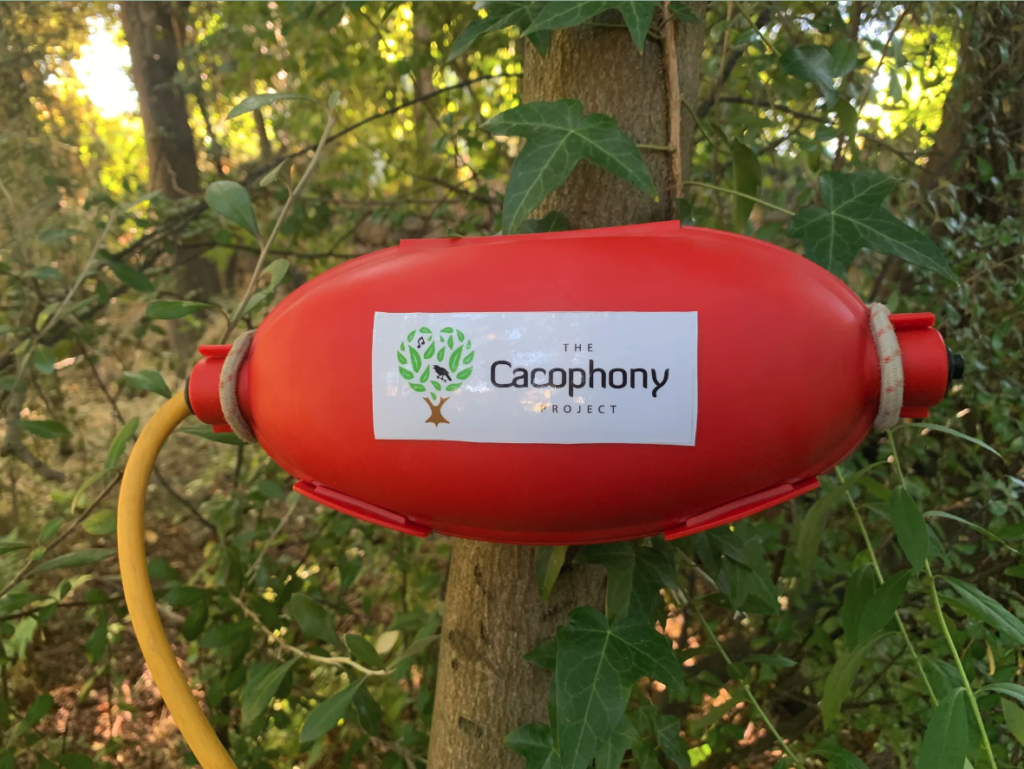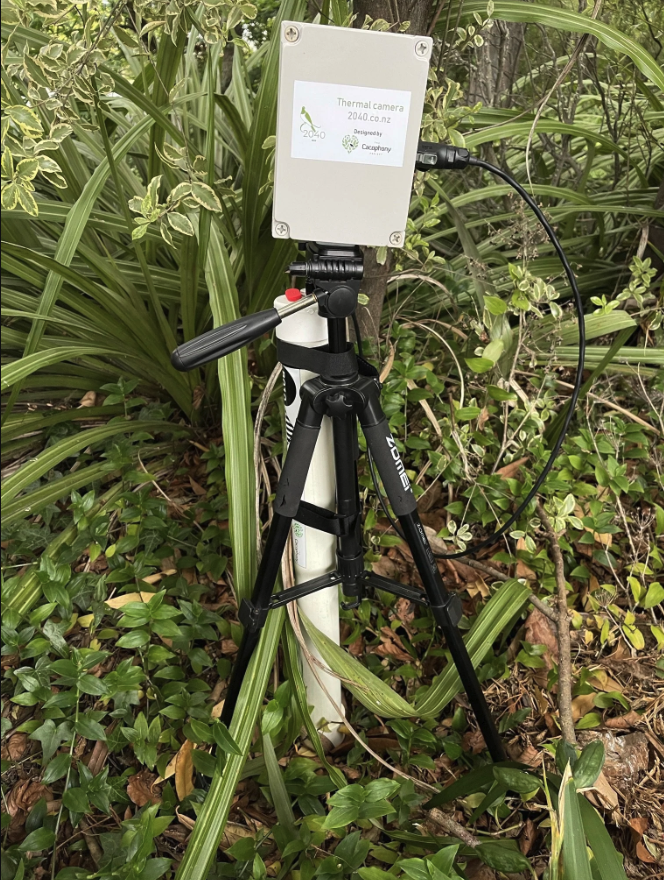After hearing Aotearoa New Zealand described as “a cathedral without a choir” serial inventor and engineering wizard Grant Ryan (Kāti Huirapa) knew he needed to use his powers for good.

Together with a bunch of mechanical engineers and software developers, Grant now runs The Cacophony Project, a space-age innovation project using technological tools and artificial intelligence to make predator free New Zealand a reality.

The seeds were first planted when Grant moved away from Christchurch after the 2011 earthquakes to a new home in Akaroa and discovered the house he’d just bought was infested with rats and possums.
Grant got stuck into trapping, trying to free his house and land from pests, and in the process, discovered how much it seemed to improve the bird life.
But it began to spark questions – was the bird life actually improving? How could he tell?
“When I tried doing five-minute bird counts, I realised how poor they are at working out what’s going on,” he says.
His inventing brain got to work, and soon he’d made a recording device using an old smartphone that would send birdsong recordings through to “the cloud” to get analysed and figure out if bird populations were increasing or not.
Little did he know that a decade on, solving problems like this would be a major part of his life.
Fast forward to 2022, Grant and his team are developing a series of tools to eliminate predators using artificial intelligence, high-tech traps, and thermal camera systems.
Eventually, Grant hopes these devices will be used as the primary tool for eradicating pests in New Zealand.
Sounds ambitious, right?

While incremental change is good, it’s not what the Cacophony Project is about, says Grant.
They’ve got their eyes on the prize and are developing the “ultimate device” which will entirely eliminate predators from areas it’s placed in.
The device itself would be a one-size-fits-all automatic trap, shaped like a box with camouflage canvas over it, which would be able to trap possums, mustelids, rats and other targeted predators.
The device would be triggered by thermal cameras using artificial intelligence to identify what predator was nearby and lure it into the trap, using light and sound to attract them.
If a bird walked into the trap, it wouldn’t be triggered because the thermal cameras could recognise it.
Bird song in the area could then be recorded and analysed to monitor the impact, and thermal cameras could assess when all predators in the area had been eradicated and so time to move the set-up.
Grant puts it in a nutshell, “It’s the ultimate device that can catch everything, and once you’re not seeing anything return, you can move it on.”
While this sounds like a conservationist’s sci-fi dream, Grant assures me this is not only possible but underway.
The thermal camera is “pretty much there,” says Grant.
“It’s vastly better at identifying what’s going on than the current cameras being used, and we have artificial intelligence running on it, so it gives you a report of what predators are there.”
“We are also using it to understand animal behavior and find out what lures and traps are working so we can design lures to fit the predator,” he says.
Building a better rat trap
After the first home project to hear what was going on by recording and digitally analysing birdsong, using cameras was the next obvious thing to do.
“We wanted to see what was going on,” says Grant.
After finding limitations with the current trail cameras on the market, which are designed for hunting big animals like deer and pigs, Grant designed his own.
He came up with a camera that was infrared and heat sensitive, so it would get triggered when a predator was nearby, could film it, and upload the video straight to the cloud.
“Using the thermal camera, we’d see tracking tunnels with no prints in them but tons of rats running around outside.”
The cameras were also showing how ineffective trapping could be, especially when trying to get a population entirely eradicated from an area.
“As we started doing more trapping, I started noticing how problematic the traps were, and I assumed for the first few years I was the worst trapper in the country,” Grant laughs.
“We’d have cameras in front of the traps, and they just wouldn’t work, and we’d try all sorts of things.”
“What happens with all trap design is they try and make it so that birds can’t go in but predators can, and, if they make it too restrictive, then predators don’t stick their heads in, and if they make it too wide then you get bycatch,” he says.
By using cameras, he realised a trap could identify predators and birds and differentiate between the two.
“Our technology gives you an intelligent way that you can lure in more predators. Once you’ve got a digital ability to see what’s happening, you can do a range of things.”
So, where to next?

The team just received funding from Predator Free 2050 Limited to improve their current trap design, and work is underway.
Predator Free 2050 Limited Science Director Dan Tompkins said the company had been co-funding a range of projects at The Cacophony Project since early 2019. “The Cacophony Project brings an innovative, practical, and outcome-focussed approach toward R&D and product development, which is vital if we are to achieve the Predator Free 2050 mission.”
“We’re constantly doing product development,” says Grant.
“We want to make the trap lighter and easier to move around,” he says.
Further add-ons include an auto-reset, so the trap can continue working even after it’s already caught something.
A super trap, like the one Grant and his team is inventing, might cost more to make, but if it can lure everything in a week, then it won’t need to be left there and can be taken somewhere else.
“Your cost of eliminating an area down to zero predators will be dramatically lower using our tools than using a whole lot of ineffective things that you leave there forever,” he says.
Technology is constantly becoming more affordable as the quality improves – a principle known as Moore’s law – so Grant says their devices will only become more affordable and better.
It’s a social enterprise and the technology they’re developing is open-source, meaning anyone can use it, adapt it and develop it further.
The open-source policy lures software developers and big thinkers who donate their time working on the various technologies being developed and adapting them to improve them.
While he says he loves the challenge of solving big problems like this, for Grant, it is about making Aotearoa New Zealand’s forests alive again.
“Our project [has always been] about the birdsong coming back.”
Want to bring the birds back to your backyard?
Try trapping in your own backyard or joining a local trapping or conservation group.

